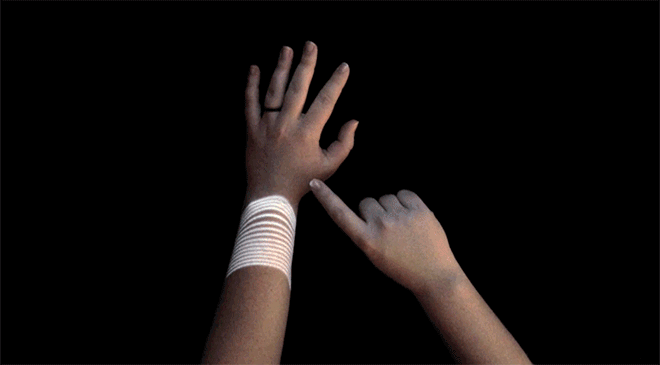Scan the crowded wearables market, and you’ll find a wild buffet of options. There are gizmos that wean you off cigarettes and monitor your sun exposure. There are wellness trackers of all sorts---and even some for pets.
No matter what the functionality, however, wrist-worn wearables haven't diverged much from the standard bangle-bracelet shape. It's often a matter of practicality---a simple cuff will fit on every wrist---but it means that devices are rarely a perfect fit. “When you create wearables, there’s a lot of guesswork as to where the thing you’re making touches the skin,” says Madeline Gannon, a researcher at Autodesk.
How might we craft more personalized devices in the future? By removing the guesswork entirely. As Gannon puts it, “If you’re going to be designing things for the body, why not just design them on the body?"
Gannon is exploring modeling techniques that use the human skin as their primary interface. Her prototype is called Tactum. Instead of creating free-floating models in software like CAD, Gannon's setup uses a Kinect camera and a projector to create a virtual modeling environment right on your hand.
The projector beams blue lights onto the skin. That light represents the base geometry of the band you’ll eventually wear. The Kinect tracks your body and space and keeps the projection aligned. To adjust the design, you drag it with your fingers; there's no layer of mediation, you just manipulate the form directly. “You could be pinching, touching, poking, prodding and that visual geometry on your arm without having to go through any computer,” Gannon says. “Your skin and hand are the equivalent of the mouse and keyboard.” The bespoke designs could then be made real with a 3-D printer.
Tactum is a speculative design for now, but Gannon thinks there could be compelling applications for it today. She's especially excited about the role this sort of technology could play in medical devices and prosthetics. Doctors already are creating customized 3-D printed parts for patients. Something like Tactum could help perfect the fit, perhaps allowing patients to adjust points of pain or discomfort directly.
